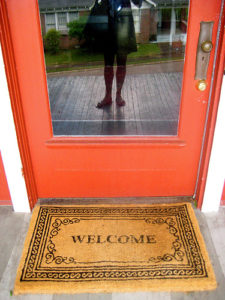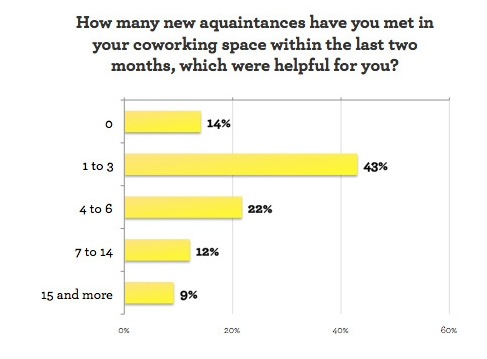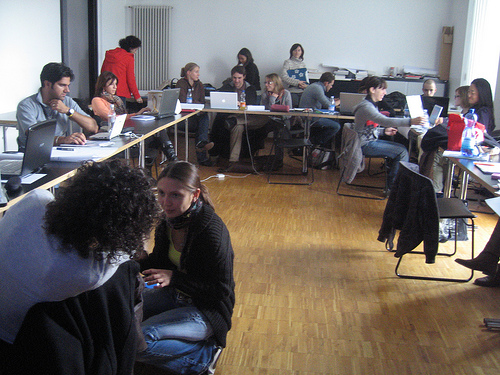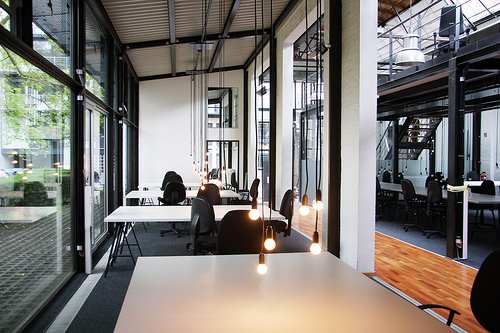If you’re a coworking space catalyst or a coworking space owner, you should probably have a welcome mat in front of your space.
Okay—not a literal welcome mat.

I’m talking about making new members feel welcome by doing the basic “host”-type duties in your space: greeting potential & new members, giving tours of the space, introducing them to other coworkers, etc.
While these my seem like no-brainer things to do, I’ve discovered that in some coworking spaces, these things are simply not happening. Although not every coworking space has a dedicated host, for those spaces that do have a host, the following to-dos are musts. I’d venture that it’s a real challenge to get a community to grow—and grow bountifully—if coworkers don’t feel like they belong. The good news is that it’s fairly easy for you to help new members feel welcome.
In my mind, the following actions are musts:
- Greet potential & new coworkers. When someone new walks into the space, is it clear where they should go or who they should talk to?
- Provide a tour of the space. No matter how small the space may be, provide a tour to help new members feel comfortable and oriented. Heck, introduce them to the coffee-maker!
- Connect them online. Provide the wireless name and password…and remind them of the website and any other communication tools available. For example, we use IRC at Cohere…old school geekdom!
- Introduce new members to current members. With respect to people’s work and time, it’s amazingly helpful to introduce new members to current members—especially between members you think might have skills, profession or hobbies in common. This, too, helps foster community!
- Orient them to the neighborhood. Do the current coworkers have a favorite lunch spot? Let the new member know what amenities, restaurants and other resources are near the coworking space.
- Other community connections. Is there a calendar of events for the coworking space? Or a list of local meetup groups & events? Or simply a list of all the members? Show the new member! They can then explore these resources on their own time and get more comfortable with the community they’ve just joined.
The idea is to make new members feel comfortable. Imagine how intimidating it is to be the n00b in a group of people who already know each other and are established in their work and social patterns. This can be challenging, even for the most extroverted of people. Fortunately, it takes only a few simple actions to help welcome new members.
If you’re a catalyst or owner, do you have other or different ideas about how to welcome your new members? What has worked and what hasn’t?







